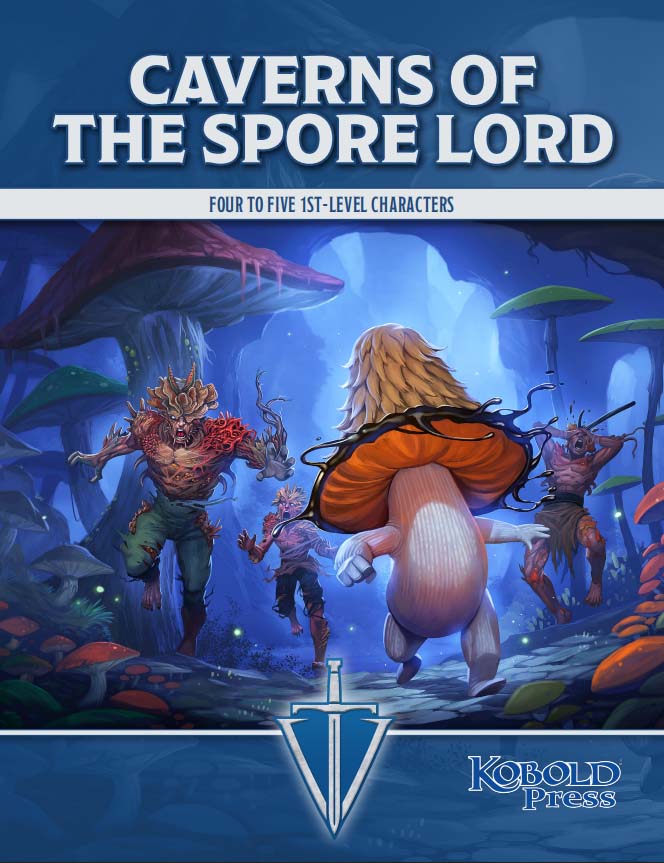
Roleplaying in a game is one of the most effective ways a player can interface with their character and immerse themselves into the world of the game. A common concern among newer players however, is that they don’t believe they can think on their feet, so they can’t roleplay in what they believe is a meaningful way.
Luckily, it’s easy to cultivate improvisation skills! The dirty secret of improv is that you can practice it. You’re at the table anyway, so try these games and tools to improve your skills.
Catch up on all installments of Improv Proficiency!
Previously, we discussed the concept of LARCH (Location, Action, Relationship, Character, History), an important improv concept that players and GMs can use to build fully realized scenes to roleplay in. You might also remember, a scene is any moment of a game in which roleplaying is in the forefront.
So now that we know how to build a scene, the next important step is learning to roleplay nicely with other players.
This does not mean that your character is always polite and cordial! Rather, you as a player must respect the etiquette that comes with improvising a scene.
Trust Your Fellow Players
It can be uncomfortable to share ideas, take a creative risk to be funny, or try something new. And at the same time, many people get their own laughs from poking fun at someone else’s ideas. That can discourage a more timid player from trying something.
So first of all, if you’re prone to laughing at someone when they look a little silly, park that for an evening. Commit yourself to supporting and encouraging other players, even if what they do is awkward.
Then, you’ve just got to give it a try. Don’t assume it’s going to go badly without giving it a shot. Trust your fellow players to support your attempts at improv and roleplay, even if you aren’t amazing at it at first.
The inverse is also true; your fellow players have good ideas as well. It is your job to support them through improv.
Yes, and . . .
The easiest and most effective way to support your fellow player in a scene is with the phrase “Yes, and. . . .” This is a core improv tool to use in a scene. It does two very important things.
First, it affirms the idea introduced by another player in the scene. It lets them know that their idea, be it an element of LARCH (see Improv Proficiency: LARCH) or something else, was heard and accepted.
Second, it gives you the ability to build off of it in a new and meaningful way with your own ideas.
Player 1:Could we go to a different blacksmith? This guy is creeping me out. (establishing Relationship)
Player 2:I agree. I heard his forge was once cursed by a witch. (using “Yes, and…” to establish History)
Here, Player 2 starts with a “Yes,” to support what Player 1 is saying about the blacksmith being creepy. Then, Player 2 builds on it with an “and . . .” about a curse and a witch.
“Yes, and . . .” helps improve communication and cooperation between players. As a GM, listen to what the players introduce in scenes. Maybe there’s more truth to those rumors about the cursed forge than the characters realize. . . .
No, but . . .
Sometimes, you or another player might introduce an idea that doesn’t agree with the scene or build on it in a way that everyone likes. In this instance, the phrase “No, but . . .” can serve a similar purpose to “Yes, and . . .”. This tool allows you to redirect a player’s creative energy without completely shutting them down.
Player 1: I hear this tavern has drinks that make you fly!
Player 2: No, but the drinks will at least make you feel that way.
This is not as good a tool as “Yes and . . .”, so use “No, but . . .” sparingly. While both take ideas and build on them constructively, disagreeing with another player’s ideas too often could make them feel like their suggestions aren’t as good, and discourages them from contributing in the future.
Blocking and Wrenching
Blocking must be avoided at all costs. A block is any word or action that denies someone’s idea without adding anything different in its place. This effectively blocks them from participating. (Think “No” without the “but . . .”.) Nothing kills a scene (and the game) faster than denying someone’s input.
Wrenching, on the other hand, complicates an idea by “throwing a wrench into it.” The goal is to make a situation more interesting. These two concepts are very similar, so it is important to tell the difference between them.
As a GM, wrenching a scene is the same as introducing a problem. Did goblins show up while the party takes too long planning? Did the party’s horses slip their ropes and wander away? Did the wizard fail one too many Constitution saving throws at the tavern? These are all different ways to wrench a scene. They can add a lot, but watch out that you’re not blocking when you do it.
Exercise: Fortunately, Unfortunately
To practice these skills and ideas, try this short, simple improv game to prime yourself to build off the ideas of others without blocking them. Sit in a circle (or face the other player if there are only two of you), and work together to tell a story one sentence at a time. Each sentence must start with either “fortunately” or “unfortunately,” alternating each time.
Player 1: Fortunately, the dragon did not see the heroes as it flew overhead.
Player 2: Unfortunately, it did hear them.
Player 3: Fortunately, the dragon is nearsighted, and could not make out where exactly they were.
Player 1: Unfortunately, the warlock’s imp started shouting and calling it names.
Continue the story until you feel it has reached a satisfying conclusion or until five minutes have passed, whichever happens first.
Try using these starting sentences with your table:
- Fortunately, there was room at the inn.
- Unfortunately, the wizard cast fireball.
- Fortunately, there was enough treasure for everyone.


Love this series so far. In straight improv nothing is pre-established and anyone is free to yes-and the story in any desired direction at any time.
The most difficult part of improvising in a TTRPG setting for me is the delicate balance of trying to add in details and build off of what others are adding while still not conflicting with the established lore of the setting that isn’t fully known by everyone.
From the GM side it feels hard to foster a sense at the table that improving and adding in details is okay when I have to block players’ ideas that conflict with my established lore.
From the player side it’s difficult to tell where it is appropriate to add to the world and improvise new details when I don’t know what is an empty page and what already has canonical details that I might be conflicting with which can cause difficulty for the GM and make the scene awkward as they have to step in.
I’d love it if you addressed this balance and solutions from both perspectives in future articles.